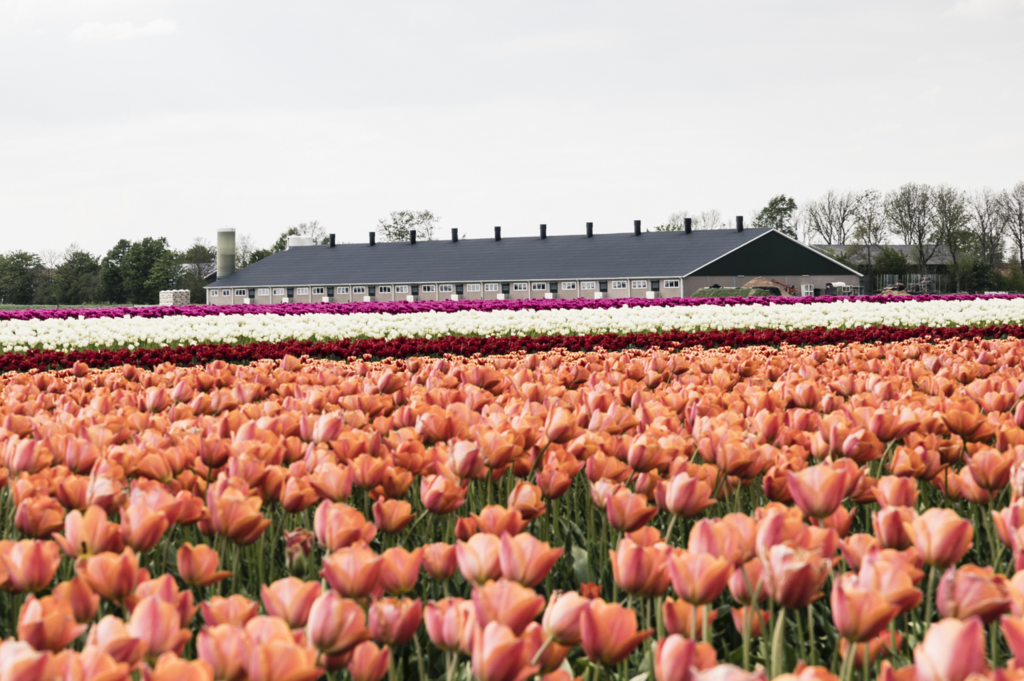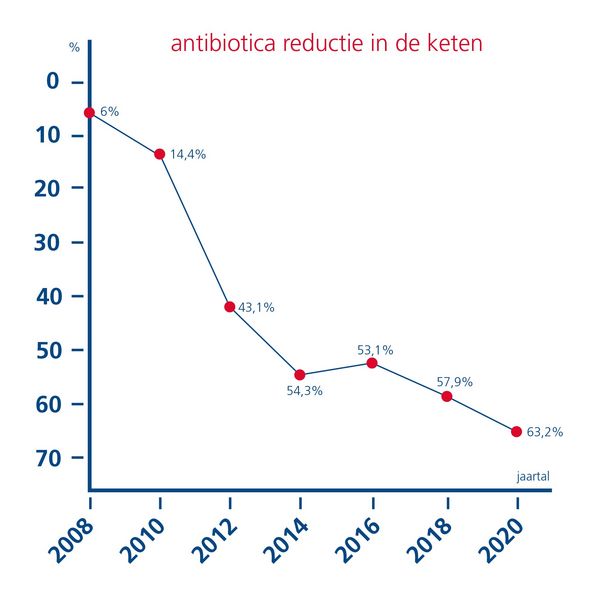In recent years, antibiotics that are crucial for treating infection in humans have hardly been used at all in the veal sector, according to the annual NethMap/MARAN report for 2021. In this report, a variety of organisations jointly present data on antibiotic use and resistance in both people and animals in the Netherlands. The VanDrie Group wants to further reduce the use of antibiotics in calves in order to reduce the risk of resistance.
”We have already built up years of experience on how to initiate such a reduction," says Albert Wouters (head of calf husbandry at the VanDrie Group). "In 2020, a reduction of 63.2% was achieved compared to 2007. Veal farmers who take the lead themselves in further reducing antibiotic use, and are guided in this by veterinarians and regional managers, have the lowest antibiotic use. This has also been shown by research carried out by Wageningen University." Factors such as expertise, a strong focus on calves, structure in business operations and an 'internal locus of control’' appear to be important for low consumption of antibiotics. Expertise means that a veal farmer has detailed knowledge about caring for and feeding calves, as well as about the most appropriate use of his/her shed (especially ventilation) and feeding equipment.
We will have to keep each other on our toes and coach each other on the key factors. This will ultimately have an even greater effect
Albert Wouters
Those veal farmers in the low-user group stand out for their strong focus on calves, either as part of a group or individually. These business owners spend extensive time in the shed, especially in the first weeks after the calves' arrival. As a result, emerging health problems are spotted quickly, and, rather than waiting, they - if necessary - intervene quickly with the individual animal: they are, as it were, "on top of things".
Structure in business operations means operating with a planned approach, one that is deliberate and well-informed. Low-use veal farmers appear to apply a lot of structure to their work, particularly when it comes to the first few weeks of the calves' lives, fixed monitoring and feeding times (milk, roughage), correct temperature of milk when dispensed, and regularly adjusting ventilation to the increasing age of the calves. Putting calves that need extra care together and using a well-equipped hygiene sluice.
The Wageningen University study also reveals that veal farmers who look for causes and solutions within themselves (internal locus of control) score better on low consumption than veal farmers who look for external causes of problems.Wouters: "Cooperation between veal farmer, veterinarian and regional managers - our colleagues in the field who advise and assist veal farmers - is, and will remain, important in the coming years. We will have to keep each other on our toes and coach each other on the key factors. This will ultimately have an even greater effect. The road to even healthier calves and lower use of antibiotics is one we have embarked on together and one we will continue to tread successfully!


![[Translate to English:] [Translate to English:]](/fileadmin/_processed_/d/3/csm_T._Boer_VanDrie_Group__3_8340c67f27.jpg)